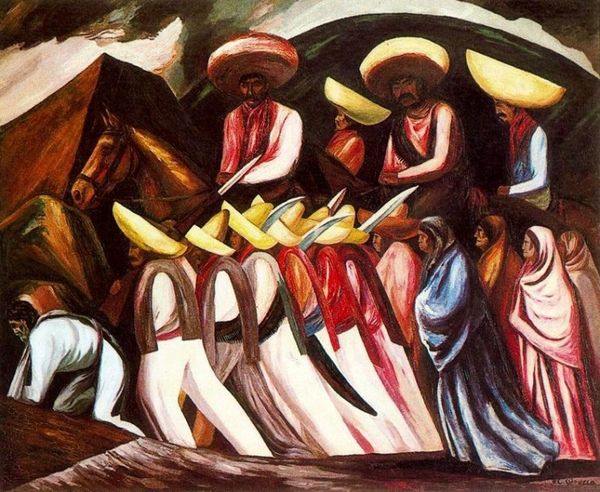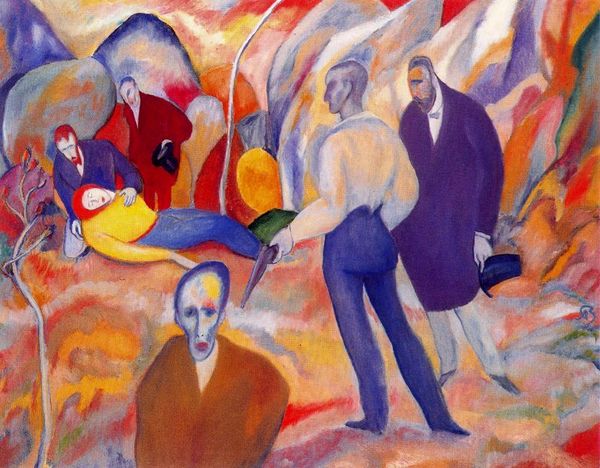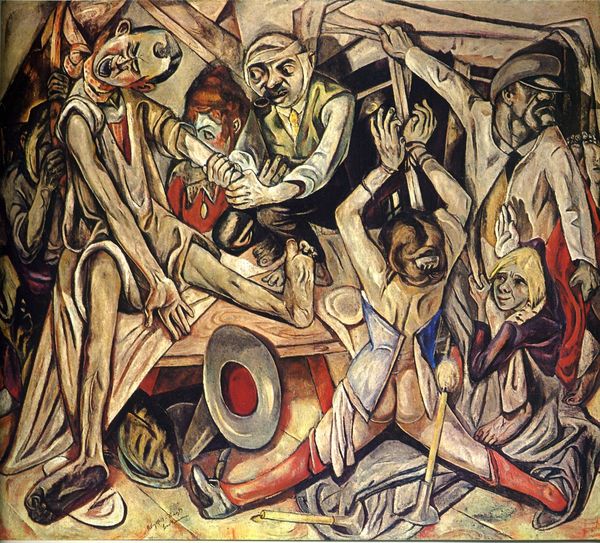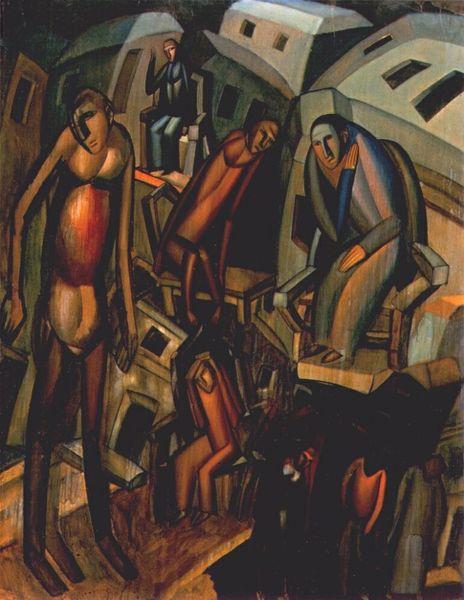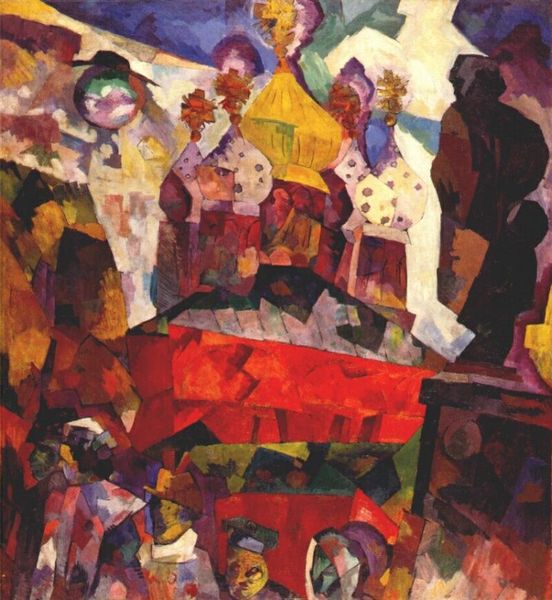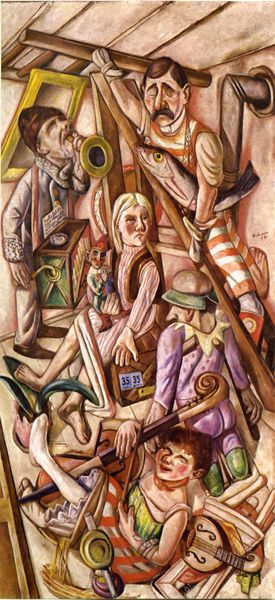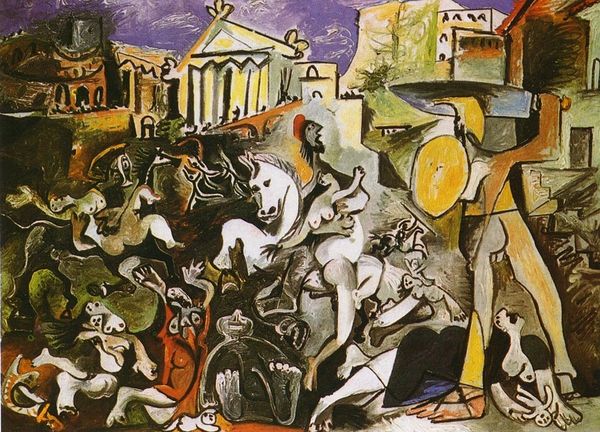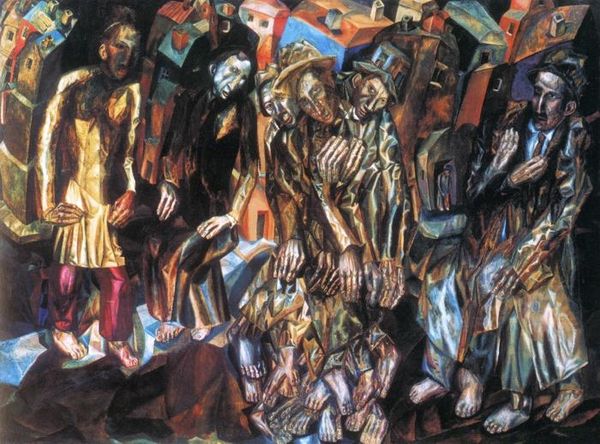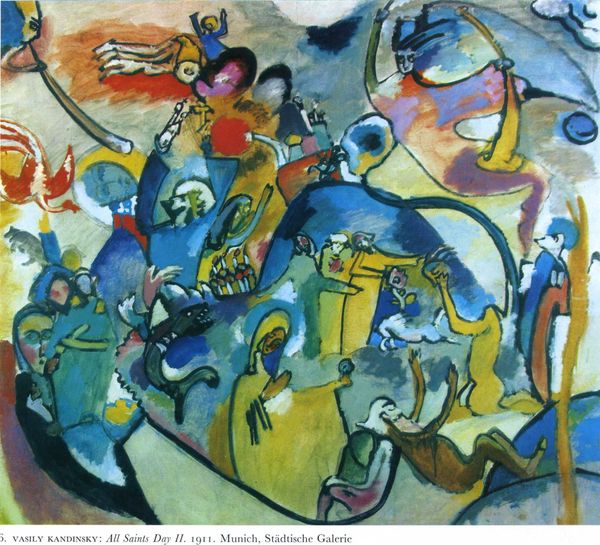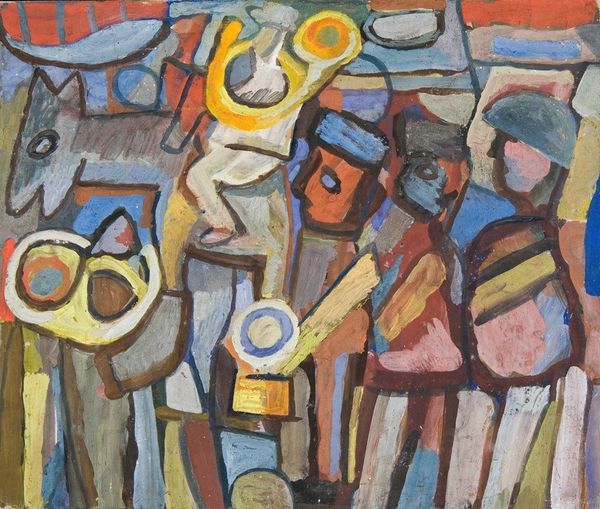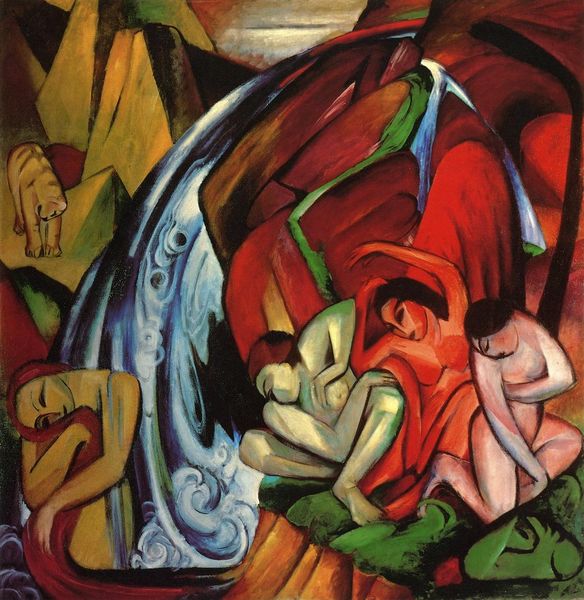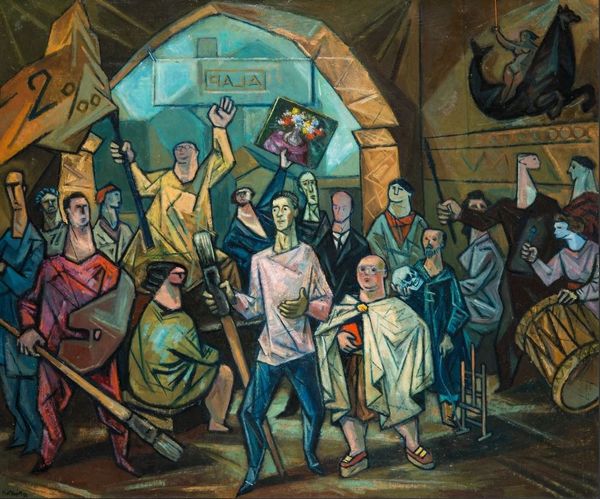
Copyright: Public domain
Curator: Pavel Filonov created "At the Table" in 1913. The artist employs oil on canvas, rendering an uncanny gathering with bold color and distorted figuration. What’s your initial take? Editor: It's unsettling. The faces are mask-like, with these vacant, downward gazes. There's a density and claustrophobia about the composition. The colors are lively, yet there is an underlying mood of weariness. Curator: Absolutely. Filonov, deeply embedded in the Russian avant-garde, especially its expressionist and cubist influences, used art as a platform to critique societal structures. Considering the backdrop of pre-revolutionary Russia, what narratives might this work embody? Editor: Knowing that, it immediately strikes me as a representation of societal fatigue, the oppressive weight of the Tsarist regime, and the social inequities it spawned. The figures, confined around the table, seem burdened, almost trapped. Are we meant to infer some hidden commentary on power and its discontents? Curator: Precisely. Filonov opposed conventional artistic norms, choosing instead to champion the notion of "organic growth" in art, implying an artwork should develop similarly to organic entities, expanding from the inside outward. Editor: Which manifests in the way that everything seems to be fragmented and rebuilt. Is that also reflective of societal fragmentation or the fracturing of traditional values? I also want to call attention to the eyes. Their positioning in contrast to the positioning of their heads. There's such hopelessness portrayed here. Curator: Exactly. The intentional distortions and disjunctions reflect Filonov's belief in the 'biologicalness' of painting, infusing social critique with his unique artistic process. One that disrupts bourgeois complacency. The formal qualities mirror political unrest, offering commentary that is deeply insightful when considering Russia's looming revolution. Editor: That certainly gives greater depth to these unnerving characters at the table. It is now hard to see the image as only portraying sadness or unhappiness, rather one of the consequences of oppression. Thank you for adding so much context. Curator: You’re welcome. Understanding the artist's intention enriches the meaning we make. The fusion of art, societal consciousness, and theory really empowers this painting's continued relevance for dialogue today.
Comments
No comments
Be the first to comment and join the conversation on the ultimate creative platform.
